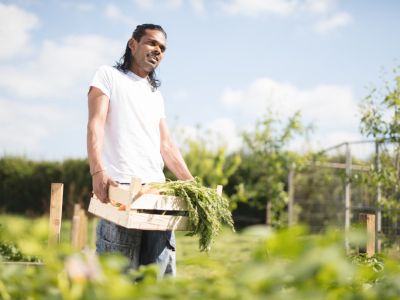Harvesting for Beginners
As a new gardener, it’s advisable to learn how to harvest vegetables to avoid damaging both the produce and the plants. Before heading out to the garden, review some of these basic harvesting guide protocols:
Pick gently – When harvesting, grasp the veggie gently, but firmly. Ripe produce can easily bruise, which can lead to premature spoilage.
Snap cleanly – Some vegetable stems have a natural breaking point while others may rip or tear when the fruit is removed. Use scissors or a knife to make a clean cut. Damaging the plant can reduce future yields.
Step carefully – It’s all too easy to step on vines when moving around the garden. This not only damages the plant, but it gives an entry point for disease.
Use a basket – Baskets prevent damage to the produce during harvest and transport. Low, long baskets are preferable for vegetable harvesting. Taller containers create a column of weight which can damage the produce at the bottom.
Check regularly – Warm weather and adequate rainfall helps veggies grow and reach maturity quickly. Check the garden on a daily basis to prevent vegetables from becoming overripe.
Basic Garden Harvesting Info
Garden harvesting info can often be found on the back of seed packets and plant tags. The description of the size and color of mature veggies as well as the “days to maturity” provides a harvesting guide to help gardeners decide when and how to harvest their veggies. To get you started, here is basic garden harvesting info for commonly grown veggies:
Green beans – Harvest when the beans are plump, but before the seeds enlarge. Beans can be stored in the refrigerator for approximately one week.
Lettuce – For a continual harvest, pick the outer leaves when they reach usable size. The whole head can pulled for a one-time harvest. Lettuce will keep for about two weeks when stored in a perforated bag inside the refrigerator’s crisper drawer.
Onions – Dig onions once the tops fall over and begin to yellow. For long term storage, cure onions at room temperature for 2 to 4 weeks. Properly cured onions can be stored in a warm, dry location for about 4 months.
Peppers – Begin harvesting green bell peppers when they reach softball size. Peppers can also be left on the plant until they change to their mature color. Peppers can be stored in the refrigerator for about 2 weeks.
